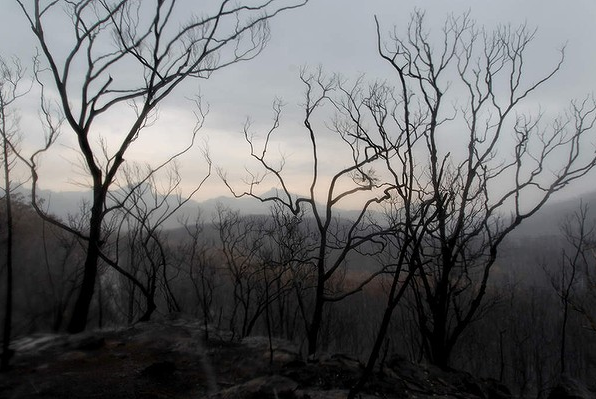80 percent of Australia’s Warrumbungle National Park incinerated
By Tim Barlass
20 January 2013 The impact of the Coonabarabran fires is revealed in a startling new map obtained from the Rural Fire Service. Overlaying the heritage-listed Warrumbungle National Park with the area devastated by fire shows the nature reserve to be almost obliterated. Only a small area in the south-west of the park, the jewel in the crown of the region’s tourism industry, is unscathed, but remains under threat from an active fire.Late on Saturday came signs of relief for those combating a fire that has raged for the best part of a week and destroyed 49 homes. The Bureau of Meteorology issued a warning that severe thunderstorms producing heavy rain in the Coonabarabran area would continue.
Forecaster Olenka Rudewych said: “We are expecting the thunderstorms and rain to persist and increase.” […] The regional manager for the National Parks and Wildlife Service, Rob Smith, said it was too early to make any assessment of the fire’s toll on fauna. “Eighty per cent of the park has been affected by fire – and it will probably be a little bit more than that,” Mr Smith said. ”We know we have lost some key assets.
”The population of koalas would have been significantly affected, as well as those for several species. We have the brush-tailed rock wallaby which is in a remote part of the park, so we have not yet been able to check on them. They could be short of food.” He said some parts of the park had been unaffected and that it would not be for some weeks after the fire was extinguished before a full assessment would be made. [more]

